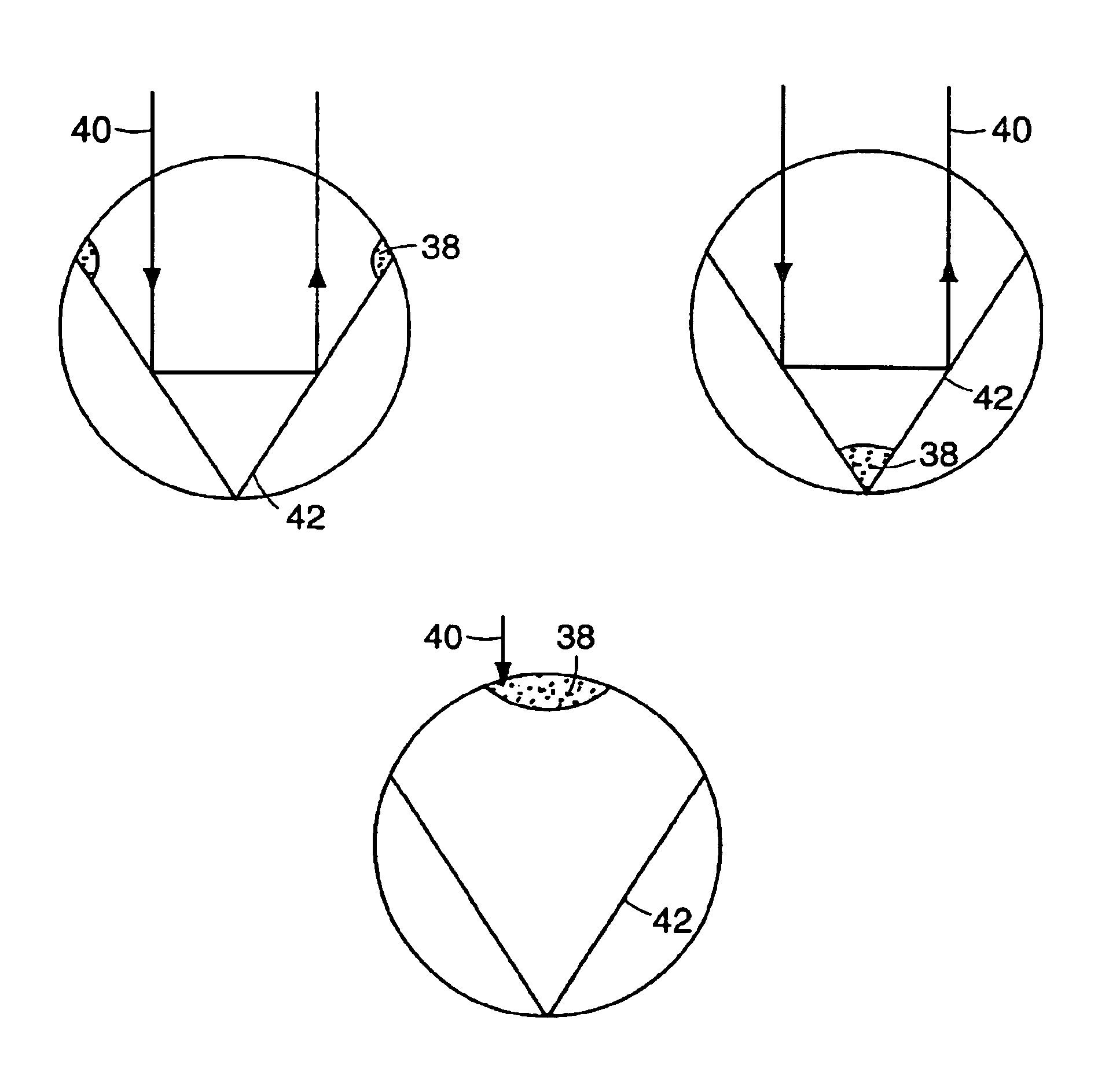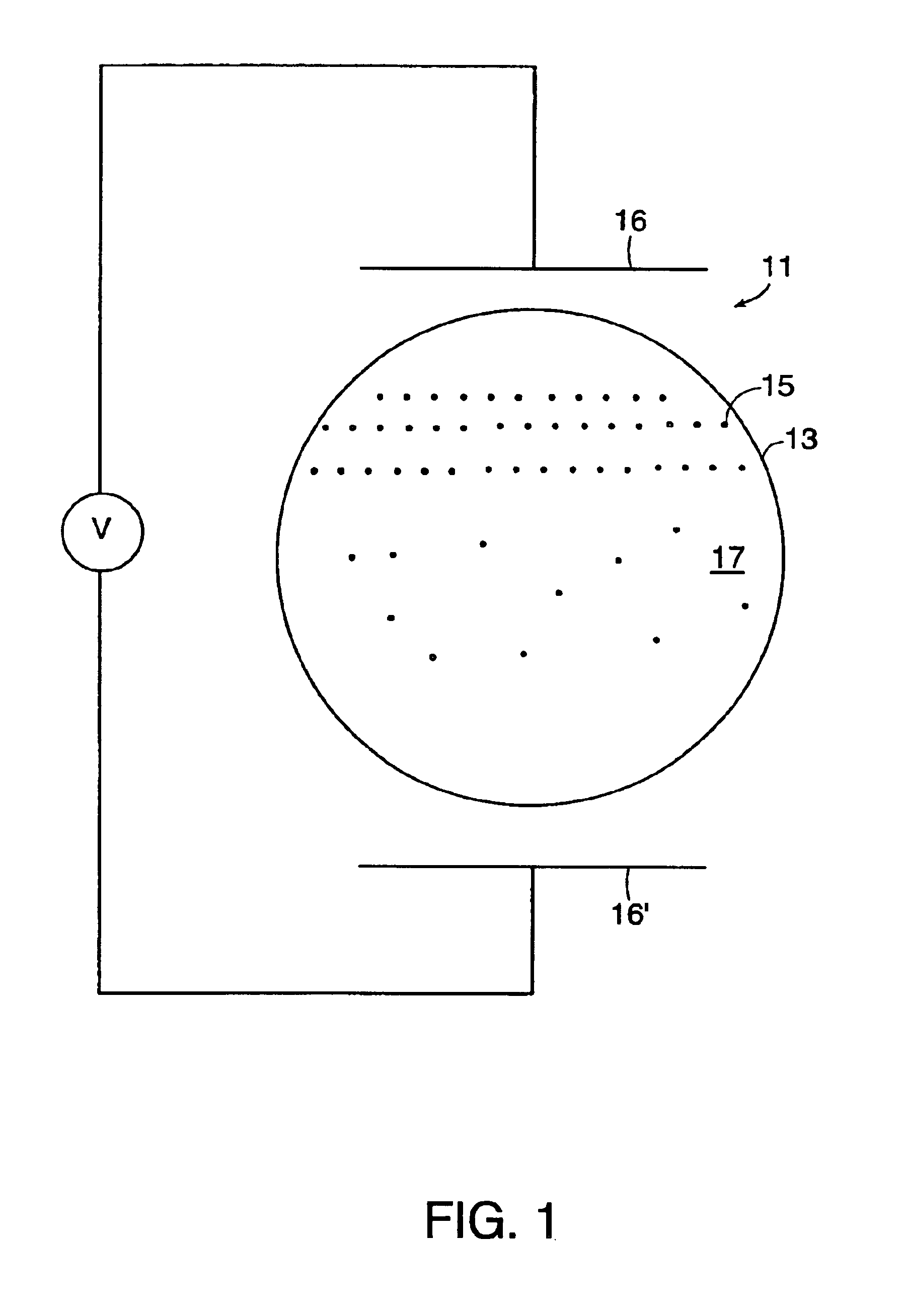Retroreflective electrophoretic displays and materials for making the same
a technology of electrophoretic displays and retroreflective materials, applied in the field of electrophoretic displays, can solve the problems of inadequate lifetimes of displays, preventing widespread use, etc., and achieve the effects of disorienting anisotropic particles, improving the optical properties of the system, and improving the control of absorbance and optical properties
- Summary
- Abstract
- Description
- Claims
- Application Information
AI Technical Summary
Benefits of technology
Problems solved by technology
Method used
Image
Examples
example 1
[0137]The following procedure describes gelatin / acacia microencapsulation for use in electrophoretic displays of the present invention.
[0138]A Preparation of Oil (Internal) Phase
[0139]To a 1L flask is added 0.5 g of Oil Blue N (Aldrich, Milwaukee, Wis.), 0.5 g of Sudan Red 7B (Aldrich), 417.25 g of Halogenated hydrocarbon Oil 0.8 (Halogenated hydrocarbon Products Corp., River Edge, N.J.), and 73.67 g of Isopar-G® (Exxon, Houston, Tex.). The mixture is stirred at 60° C. for six hours and is then cooled to room temperature. 50.13 g of the resulting solution is placed in a 50 mL polypropylene centrifuge tube, to which is added 1.8 g of titanium dioxide (TiO2) (du Pont, Wilmington, Del.), 0.78 g of a 10% solution of OLOA 1200 (Chevron, Somerset, N.J.), in Halogenated hydrocarbon Oil 0.8, and 0.15 g of Span 85 (Aldrich). This mixture is then sonicated for five minutes at power 9 in an Aquasonic Model 75D sonicator (VWR, Westchester, Pa.) at 30° C.
[0140]B. Preparation of Aqueous Phase
[014...
example 2
[0150]The following is an example of the preparation of microcapsules by in situ polymerization.
[0151]In a 500 mL non-baffled jacketed reactor is mixed 50 mL of a 10 wt % aqueous solution of ethylene co-maleic anhydride (Aldrich), 100 mL water, 0.5 g resorcinol (Aldrich), and 5.0 g urea (Aldrich). The mixture is stirred at 200 rpm and the pH adjusted to 3.5 with a 25 wt % NaOH solution over a period of 1 minute. The pH is monitored using a pH meter that was previously calibrated with pH 7.0 and pH 4.0 buffer solutions. To this is slowly added the oil phase, prepared as described above in Ex. 1, and agitation is increased to 450 rpm to reduce the average particle size to less than 200 μm. 12.5 g of a 37 wt % aqueous formaldehyde solution is then added and the temperature raised to 55° C. The solution is heated at 55° C. for two hours.
example 3
[0152]The following is an example of the preparation of microcapsules by interfacial polymerization.
[0153]To 44 g of the oil phase, prepared as described above in Ex. 1, is added 1.0 g of sebacoyl chloride (Aldrich). Three milliliters of the mixture is then dispersed in 200 mL of water with stirring at 300 rpm at room temperature. To this dispersion is then added 2.5 mL of a 10 wt. % aqueous solution of 1,6-diaminohexane. Capsules form after about one hour.
PUM
| Property | Measurement | Unit |
|---|---|---|
| diameter | aaaaa | aaaaa |
| diameter | aaaaa | aaaaa |
| diameter | aaaaa | aaaaa |
Abstract
Description
Claims
Application Information
 Login to View More
Login to View More - R&D
- Intellectual Property
- Life Sciences
- Materials
- Tech Scout
- Unparalleled Data Quality
- Higher Quality Content
- 60% Fewer Hallucinations
Browse by: Latest US Patents, China's latest patents, Technical Efficacy Thesaurus, Application Domain, Technology Topic, Popular Technical Reports.
© 2025 PatSnap. All rights reserved.Legal|Privacy policy|Modern Slavery Act Transparency Statement|Sitemap|About US| Contact US: help@patsnap.com



